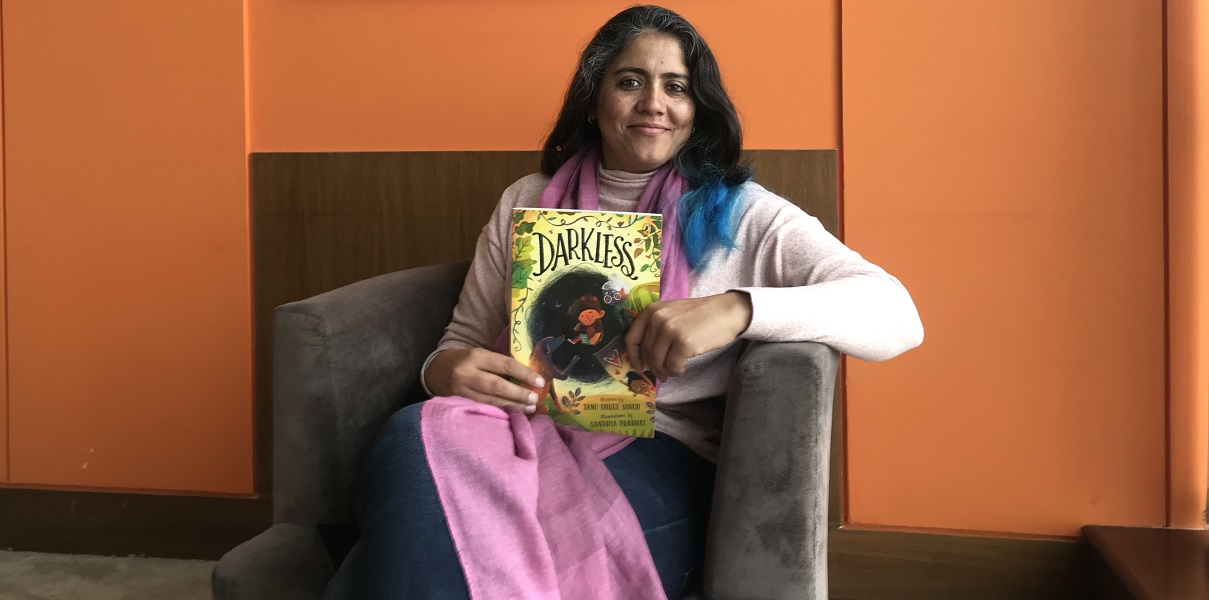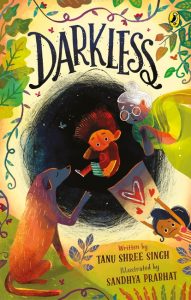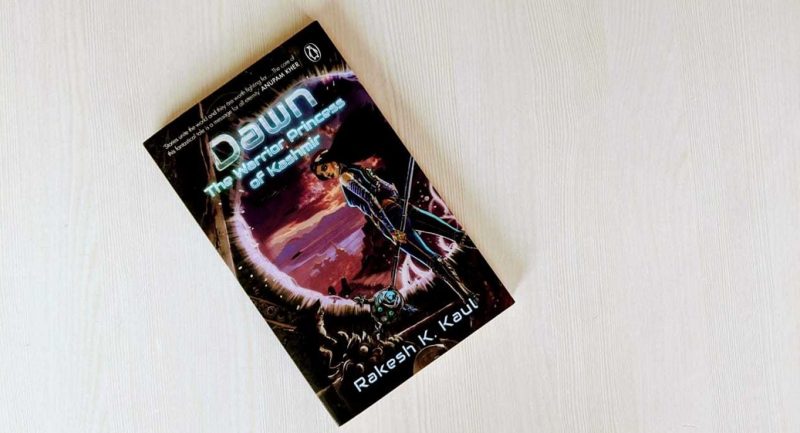
by Tanu Shree Singh
‘Last three years have been a struggle after Mom passed away. Darkless brought a sense of calm to me. That I am okay. That I will be okay,’ a woman my age wrote in a few days back.
‘I read this to my boy. After we turned the last page, he gave me the tightest hug though he had been at loggerheads with me the entire day!’ said another.
And then there have been the responses at various sessions with kids:
‘Dying scares me.’
‘I am scared that my pet dog won’t come back from hospital.’
‘My Dadi is too sick.’

Darkless
Tanu Shree Singh, Sandhya Prabhat (Illustrator)
The conversations amaze me, stump me, but mostly worry me since most of the children also confess that they have never talked to anyone about it.
It has been more than four months since the book came out and never had I anticipated that it would reach people across age groups, across fears and across life situations. It is surreal and humbling at the same time. And when someone somewhere reaches out to let me know that the book helped them reach out or find inner peace, it makes all the phases of uncertainty before it came out totally worth it.
People often ask if any personal tragedy or fear prompted me to write Darkless. Although, all of us have our own bags full of fears and worries, this book didn’t come from that bag. It came out of a telephone conversation with a friend, Vaani Arora, who was working on some story based on the concept of light and dark as part of a STEM series. I saw light as something that seemed bright and colorful when the heart felt light. And when clouds of uncertainty, fear or worries visited, everything got dark. The story continued long after she hung up. I wrote it and sent it to a number of places only to be handed one rejection after another. Most thought that it was too dark or made no financial sense and so on.
I forgot all about it too for a couple of years. And then out of the blue I sent it to Pickle Yolk Books. Rest as they is a mad slice of history. We all put our hearts into the books – Sandhya with her sensitive illustrations, Richa with her impeccable editing and ideas and finally Sohini for putting her faith in the book. And then the hunt for the right title began! We brainstormed different options and out of the blue, Parag from Penguin said ‘Darkless’! We literally pounced at it. I have always maintained that books are a product of good teamwork and this one is a perfect example of that.
Darker emotions are often brushed under the carpet, more so when it comes to children, since we assume that they do not feel the depth of it or that they need to be protected from them. We hide them from uncomfortable situations and questions. We do that thinking that we are keeping them safe from whatever life throws at them. The truth is that somewhere, we are in denial. We don’t want to face the realities ourselves, mostly out of uncertainties and fears, and so rather than befriending and eventually accepting our own demons, we choose to ignore. The children, meanwhile, deal with their own solitary clouds in whatever way they can. Sometimes they accept the cloud as a part of themselves.
What we – the grown-ups – forget is that kids are just regular people. They experience all emotions as adults do, with similar intensities. The sessions that I have done so far around the book have been an eye-opener. From first graders to teenagers, all start the conversation about anxiety, stress and fear with innocuous things like worms, lightning, and bad dreams, and soon quiet conversations around deeper, bigger fears follow; things that they normally do not talk to anyone about. From fear of dying, being left alone, to anxiety around a sick family member and even the mortal fear of losing them – everything tumbles out. When asked what they do when they are gripped by these worries, most had little to say. They mostly kept quiet, mostly buried it.
Through this book, I hope to give the quiet ones a way forward, some tools to deal with the grief, a small step out of their own worry clouds. We need these conversations on fears, on worries, on friends like Ani’s who don’t give up, on the importance of being in the present, and being gratefully aware of the good things in life, no matter how small they are; just like the dust fairies that Ani loved to spot.
‘Ma’am,’ a little girl approached me after a recent session and asked, ‘can I please hug you?’ I received one of the warmest hugs in a long time. ‘I get scared of having no friends too,’ she whispered. ‘But I will be okay, thank you.’ Moments like these make all the drafts that I wrote, all the words I let go of, and the ones I stood by while we made the book, totally worth it.
My hope for this book is not multiple editions or a position in bestsellers’ list. My hope for it is that it helps a child rekindle hope and allows some grown-up somewhere to shed some happy tears and heal.








